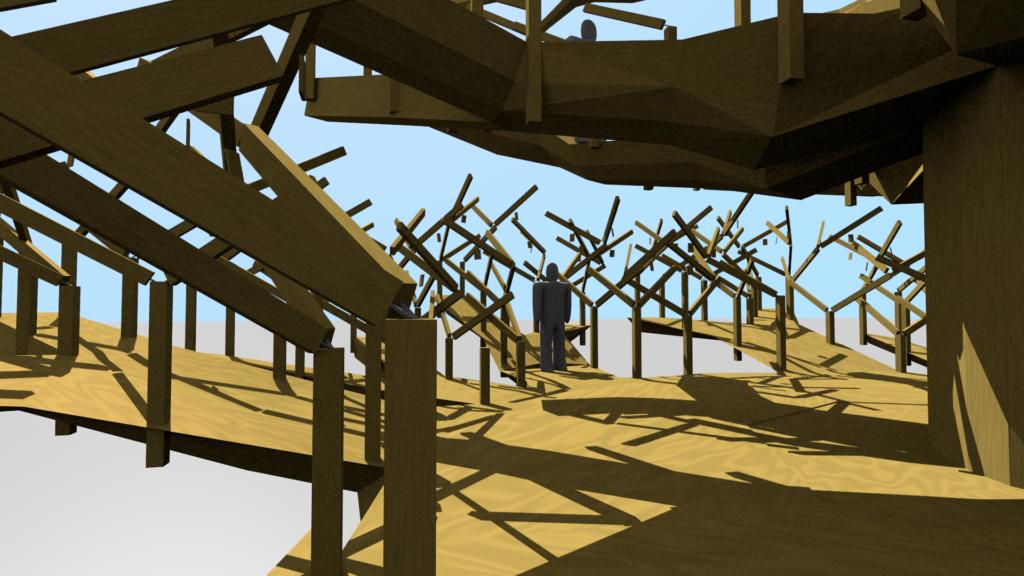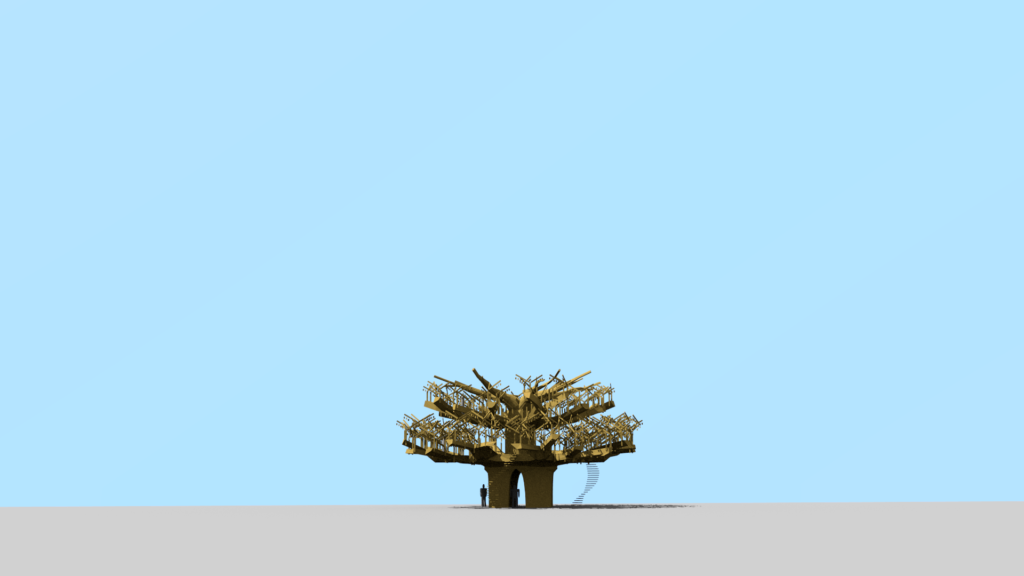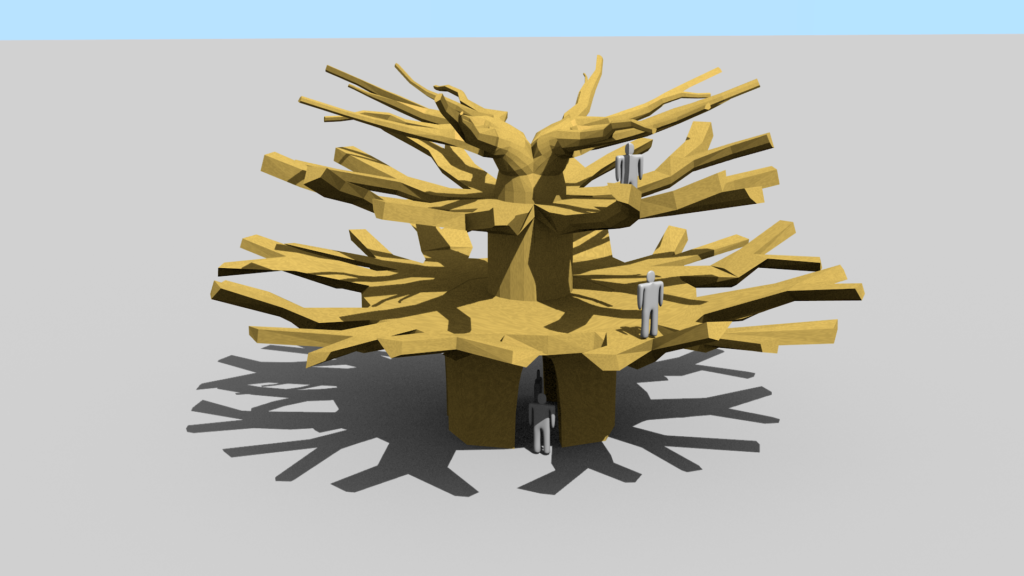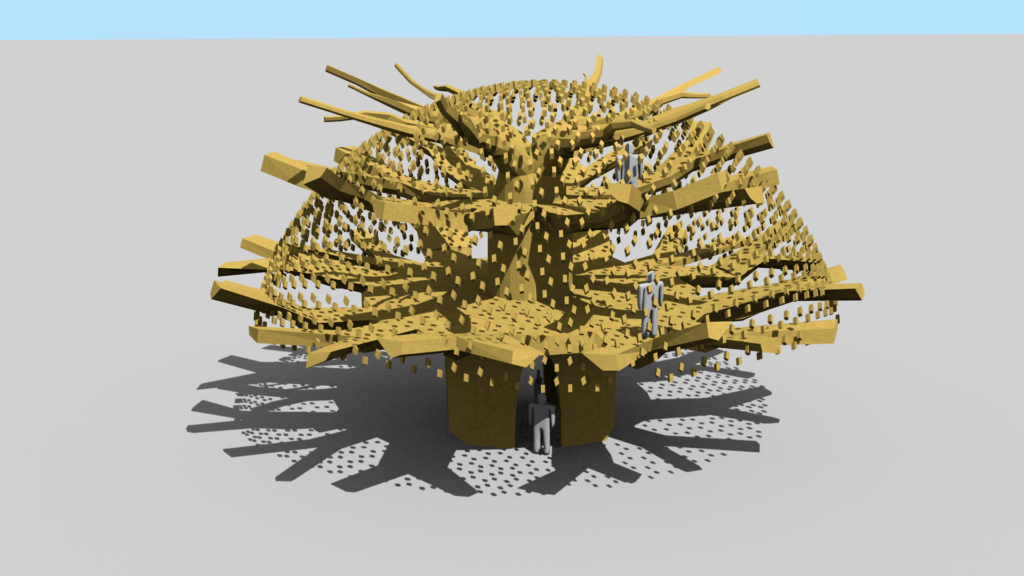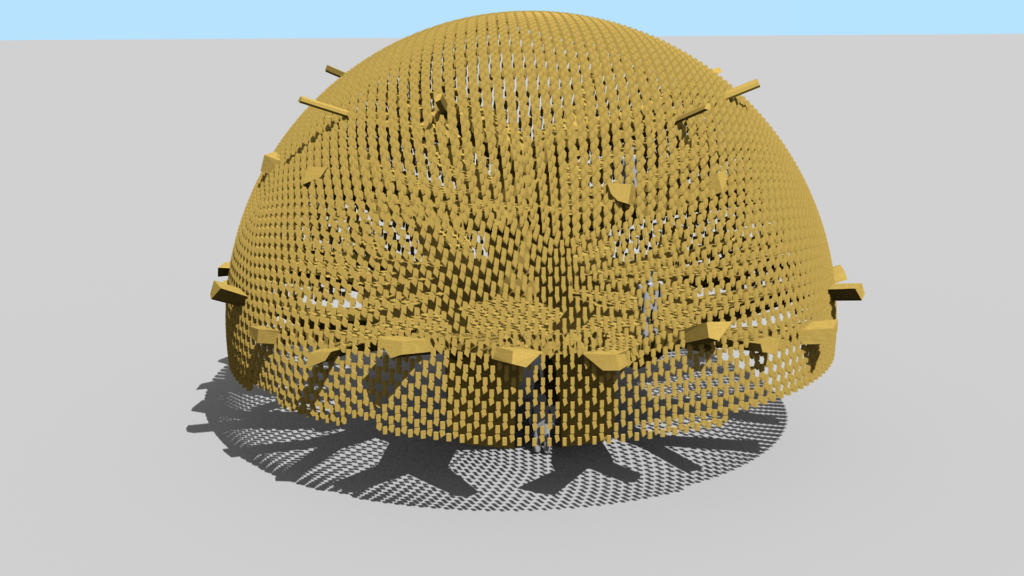I hadn't touched Blender in months but I got back to it and figured out how to link objects with hinges. I took the original design and split off individual segments then connected them together how I wanted. The simulation isn't great since it's a rigid-body simulation so the parts act like they're infinitely hard rather than deforming and breaking under stress. I did set up most of the hinges to break under a high load as I would expect to happen in reality. Unfortunately the combination of rigid objects and breakable hinges means many of the pieces just pop off immediately.
In any case, the point is to demonstrate the way the Temple would collapse during the burn. Once the safety supports are removed for the burn, the first level would be held up by one or more thick hemp ropes wrapped around the main central posts. When the fire weakened the rope enough, it would break and unlace through the support, staying in the channel designed for this purpose. That would release all the sides at the same time and cause the whole Temple to collapse at once, giving it a definitive end.
The next step, I think, is to rework this backwards to show how I intend the first level to be assembled—basically in reverse of collapse. I think if I do that, I can get Blender to fit the pieces together without being under exploding pressure.

